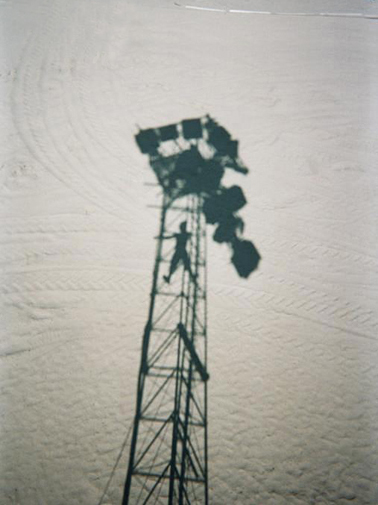Light is the eyes of the audience, and each performance requires its own, unique way of seeing.

I describe myself as a scenographer whose primary materials are light, space and perception. I call my practise sensory scenography, as I am curious about how light affects the body as well as the mind and eyes. I am also interested in how space and perception are organised, and how this in turn organises us. I try to make sense of systemic and political mechanisms through the experience of the senses and perception. I make spaces that examines these relationships, and can softly open up a conversation about systemic ways of thinking, and explore other possible ways of being and doing together. My practise brings together work as a researcher, light designer, teacher and maker of immersive sensory installations.
MAKER
From this hybrid practice developed a methodology that is intrinsic to my artistic practise, which I call Sensory Scenography. It explores light as a sensory medium that is experienced by the body as well as seen with the eyes. Rather than using light to describe or illustrate a situation, I seek to create the experience of that situation. My work uses compositions of light, sound, smell and space to provoke physiological effects or direct the body and mind to specific responses and memories. Sensory scenography creates an embodied experience of the work’s theme or narrative and, manifests, through physical experience, questions about our relationship with the world and our connections with each other. My work bases itself on the recognition that it is through the whole sensing body that we perceive, experience and are connected to the world. It aims to create space for attention and empathy in shared experience, reconnecting with the profound, embodied understanding employed in sensory perception.
DESIGNER
With a background as a performer in Australia, I came to light design via het Veem Theater, a production house for contemporary Dutch mime. Mime is an innately visual theatre style, using form and images to communicate in a broader narrative structure. Not knowing the end before you begin, the work evolves through improvisation, working together on the floor, using all of the tools of theatre to create a performance. Within this genre, there was a lot of space for me to develop a style of light design that took as its starting point the dramaturgy of a piece and not just the visibility of the performers.
Working with the image-based, location theatre group Dogtroep was another huge influence on my work. This period broadened my vision as to what it means to work with lights in a collaborative, creative process; creating light objects and images, and working with actors to create characters and storylines developed through their interaction with light. This interactivity, creating a physical as well as dramaturgical relationship between the performers and light, remains an important part of my work.
To further develop my artistic process I undertook a MFA Scenography at the Frank Mohr Institute in 2011. This experience refreshed my vision as a designer, enabling me to fully explore the underlying principals of design and dramatugy, and develop my ability to work artistically and conceptually with light. I undertook research which focused on the non-visual effects of light, the way light shapes our perception, and the psychological and physiological effects light can have on the mind and body. This had a profound effect on my work, adding new depth to my designs. I continue to learn about, question and be inspired by light and find ways to delve further into my own fascinations with it.
I try to create light that is necessary; engaging in a process where through the discovery and development of a piece, I discover the form of the lights. I search for clarity of function; what is it that the light needs to do in this performance? To illuminate the journey of a piece, as opposed to illustrate it; to give light a formative role in the performance, rather than just a decorative one. For me the process of making a light design is as important as, and greatly influences, the resulting design. I aim to use light to create an environment in which the development of the concept and direction of a piece occurs hand in hand with the development of the stage and lighting concept, each element inspiring the other and working together to produced an integrated whole.
In my work I am seeking to broaden the vision of what light design can do to deepen the relationship between a performance and its audience. I believe that theatre light is made richer through harnessing all of the qualities of light, both seen and unseen, to use with dramaturgical intent. Light brings its scientific and symbolic use, as creator of life and symbol of transcendence. It brings its social functions, its ability to unite and connect us. It brings its ability to make us feel safe or threatened, to stimulate or give solace, to affect us physiologically, to harm or heal both the mind and the body. And it brings its visual beauty, its drama and chaos. My designs explore how light makes people feel, physically and emotionally. And how to use light to create a physical or emotional space to bring the audience closer to the world of a performance.
It is a step beyond watching to experiencing that is the foundation of my work. Light is more than a purely visual medium and my designs explore its ability to resonate viscerally with an audience. To touch an audience with light.